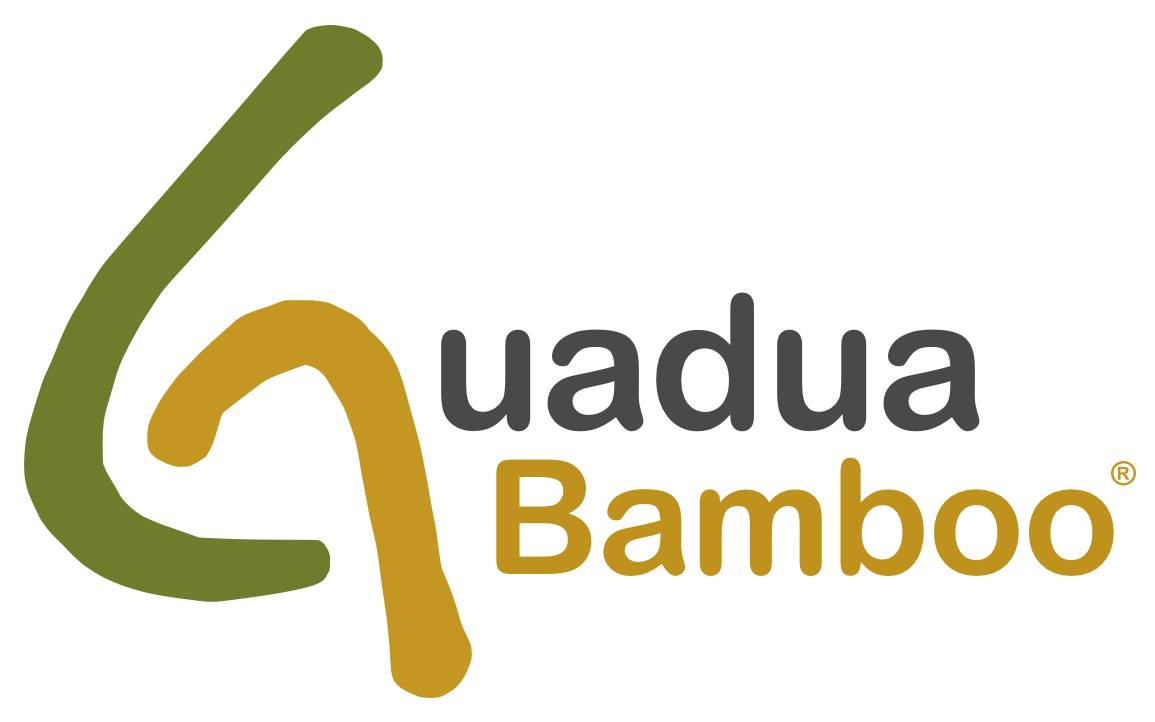
Bamboo History Timeline: From Ancient Traditions to Modern Innovation
Discover the fascinating history of bamboo with our complete timeline — from ancient China to modern aerospace applications. Learn how bamboo shaped culture, construction, and technology worldwide.
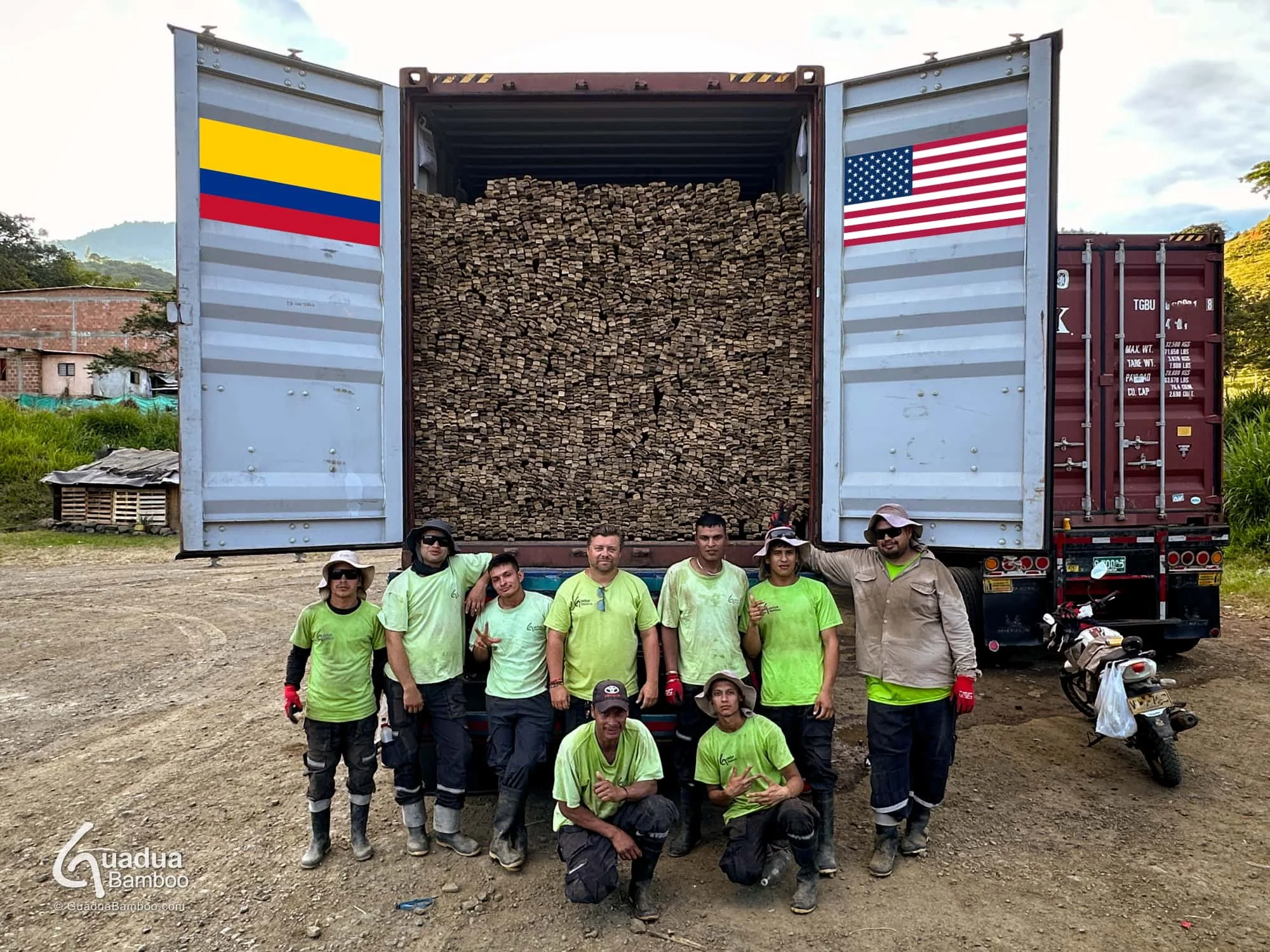
Guadua Bamboo Slats Shipped to the USA for Industrial Lamination
A new chapter in our export story is unfolding as massive amounts of Guadua Bamboo® slats begin to roll out of our factory in Colombia, headed to the United States 🇺🇸.
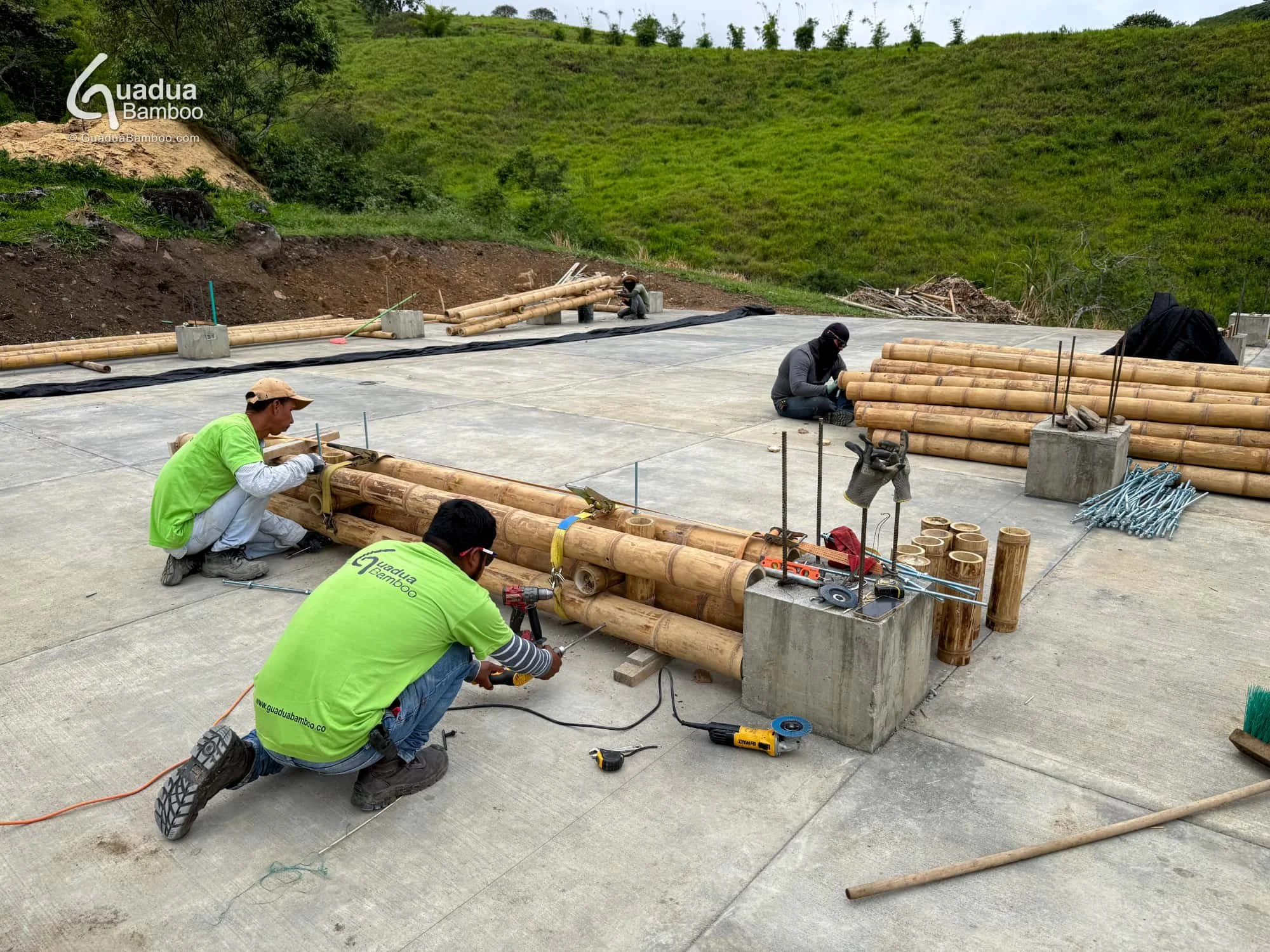
Breaking Ground on Our Biggest Bamboo Build Yet
Every year at Guadua Bamboo, we take on a new challenge and push the limits of what can be built using Guadua angustifolia. This year is no different… except for the scale. We’ve officially started work on our largest bamboo structure to date!

Laying the Groundwork for Something BIG at Hacienda Guadua Bamboo
This week, we completed the base platform for a brand-new bamboo structure, and as you can see, it’s no small task. The concrete slab sits firmly on a retaining wall made from locally sourced river stones.
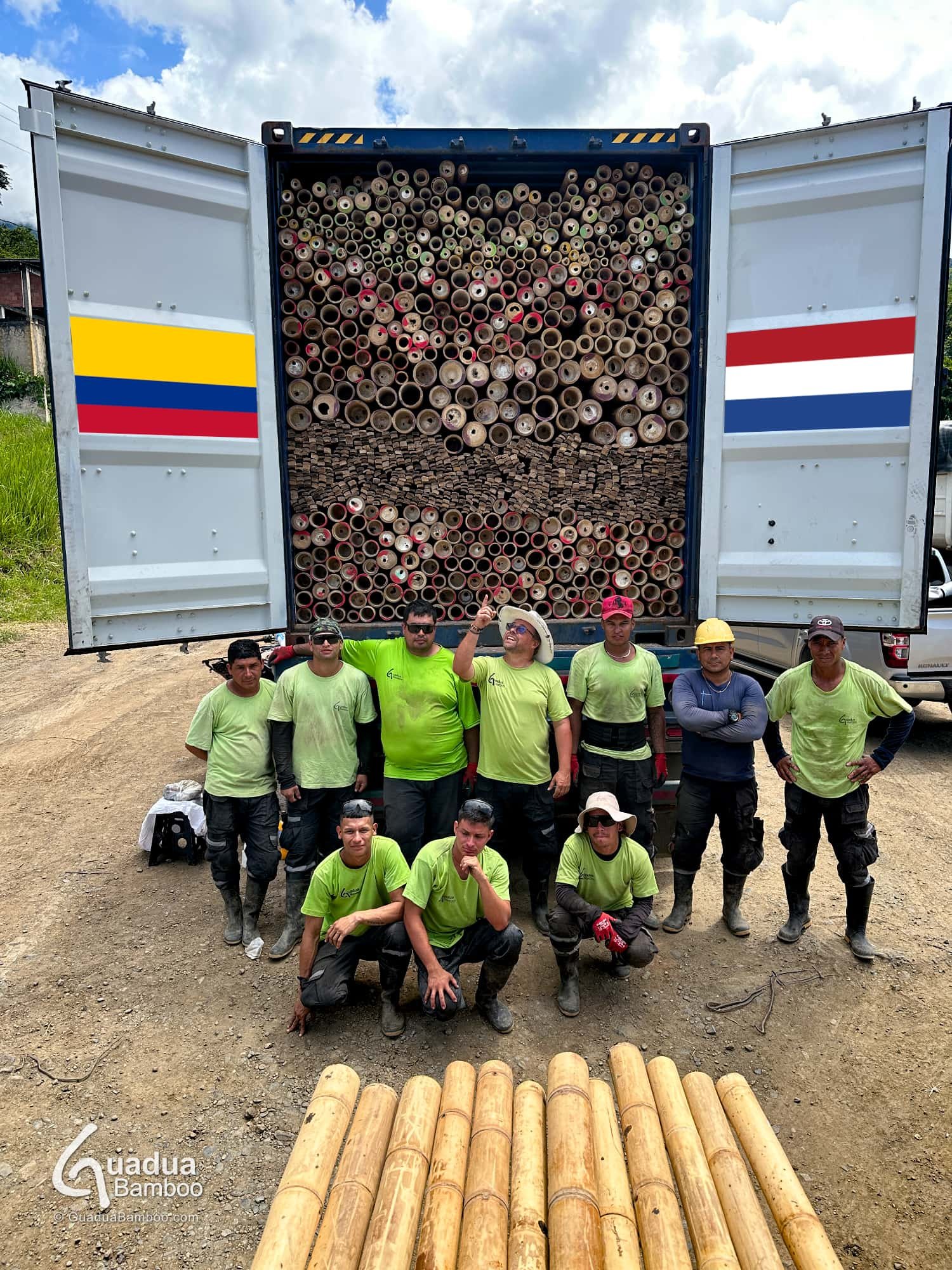
Guadua Bamboo Export – Colombia to the Netherlands
This week, another fully loaded 40ft container of Guadua Bamboo® poles and slats has left our facility in Colombia, heading straight to Masters of Bamboo - our exclusive distributor in the Netherlands.
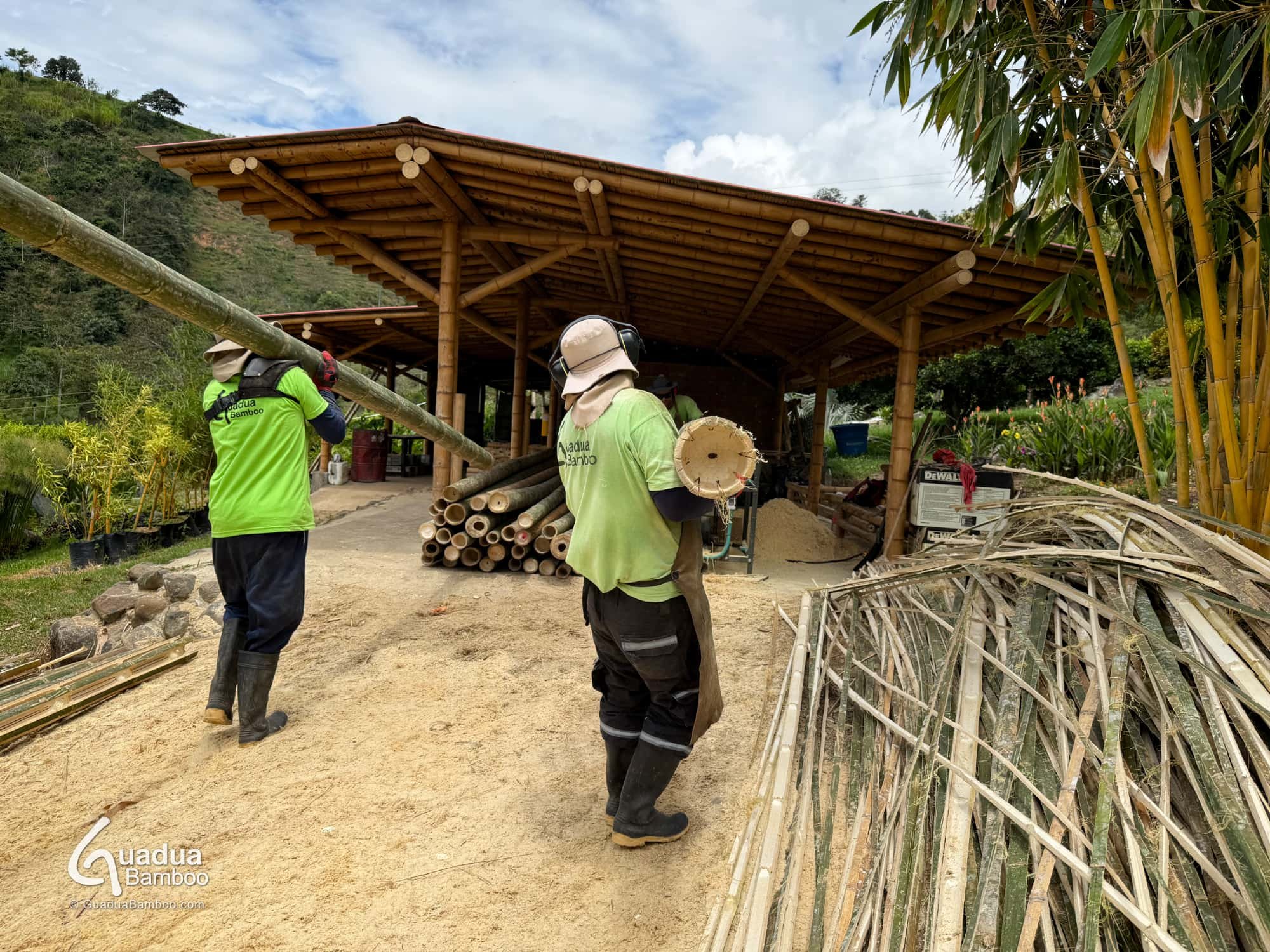
From Raw Bamboo Pole to Precision Slat
At our facility in Colombia, Guadua Bamboo® slat production is more than just processing—it’s a carefully controlled, large-scale operation designed to meet the demands of specific engineered bamboo applications.
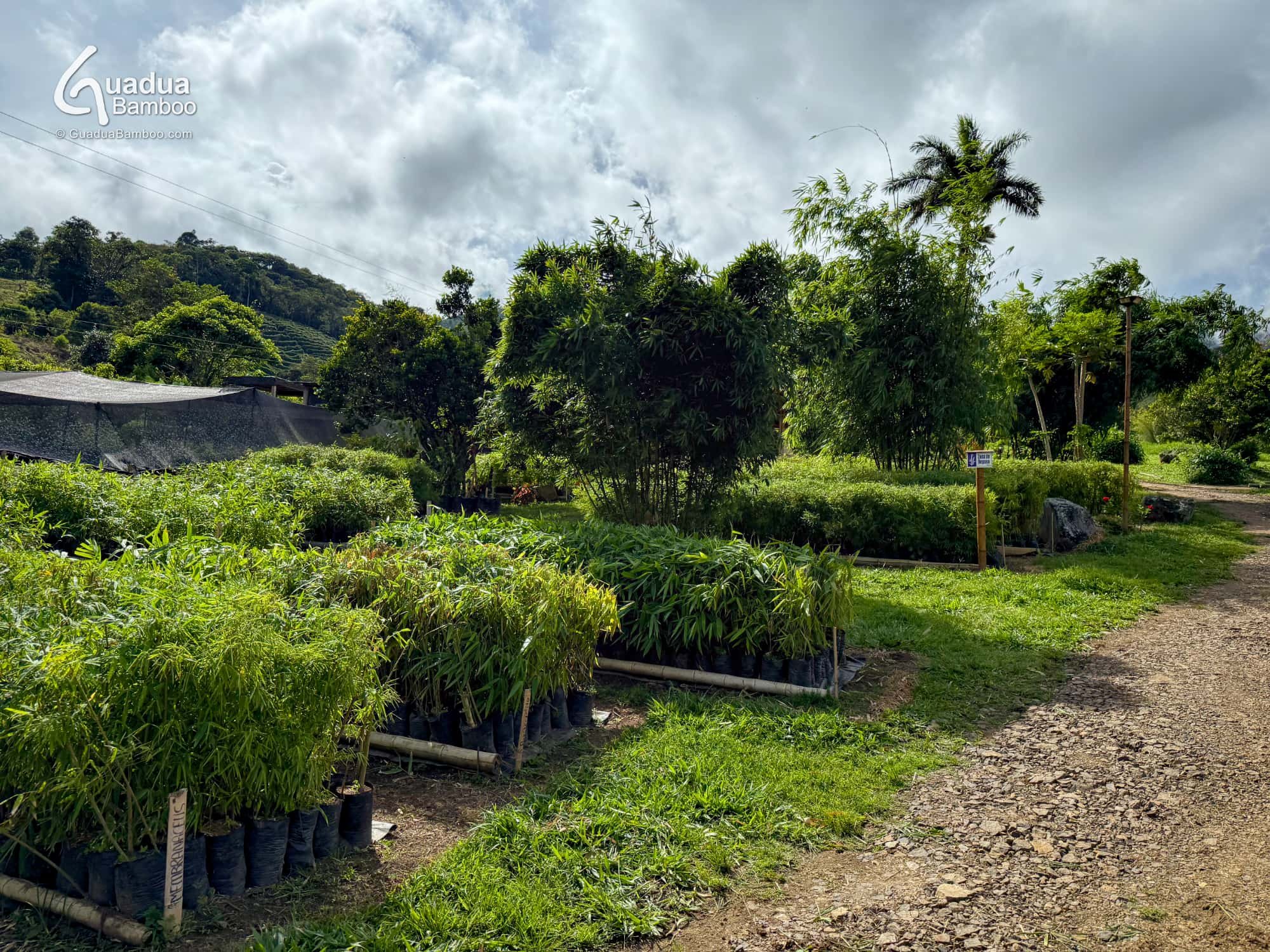
Colombia’s Only Tropical Bamboo Nursery
Did you know we operate the only commercial nursery in Colombia specialized in tropical bamboo? Tucked away in the hills of Bajo Sabaletas, Valle del Cauca, our nursery is home to over 60 distinct species of bamboo.

Lifting Rocks with a Guadua Bamboo Tripod
In the rugged terrain of rural Colombia, some of the toughest jobs still rely on the raw power of nature. This handcrafted Guadua bamboo tripod is a perfect example of that.

Guadua Bamboo Poles on the Way to Uruguay!
This week marks an exciting milestone—our first shipment of Guadua Bamboo® poles to Uruguay! 🎉
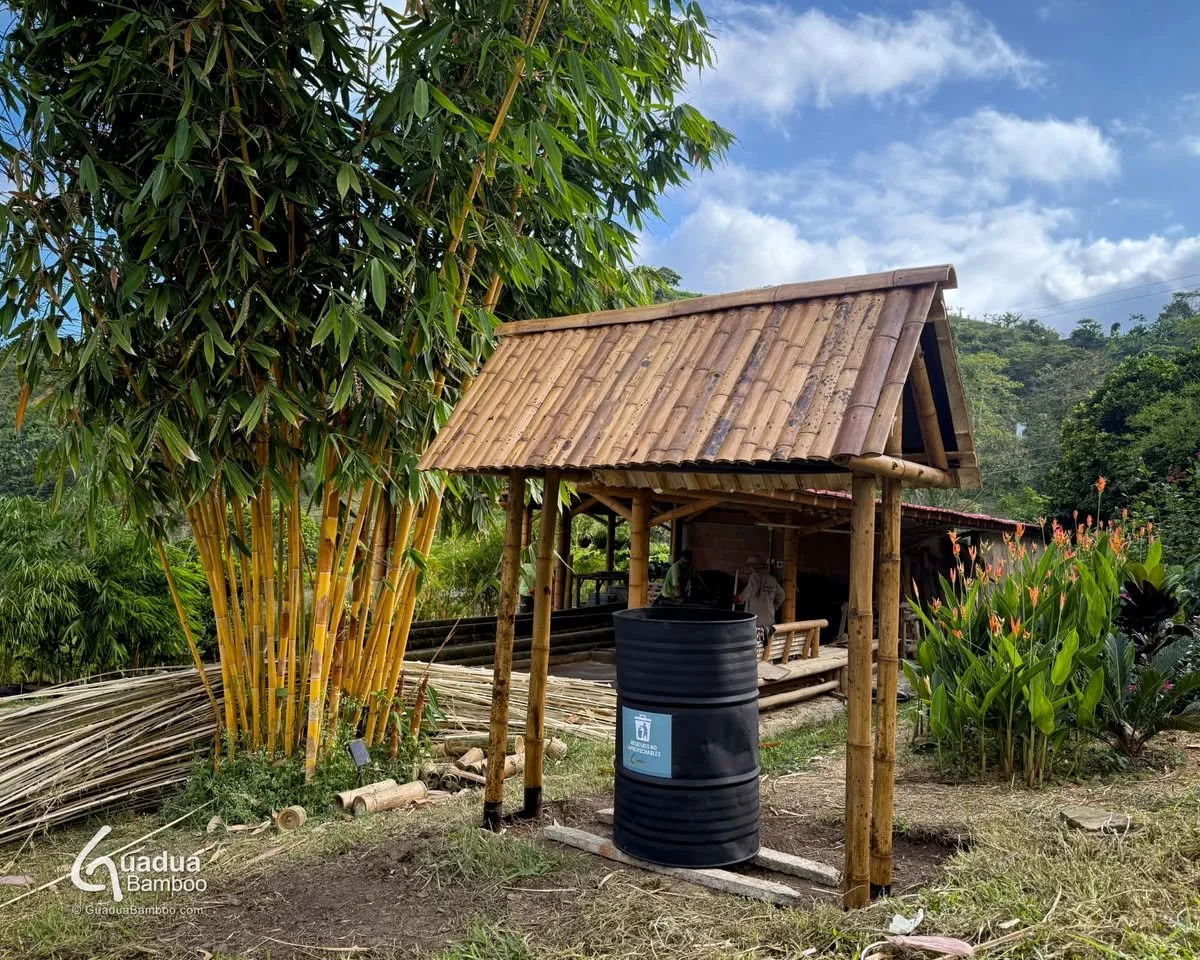
Building with Style - Bamboo Trash Can Covers
Not every project has to be large-scale to make an impact. This week at the farm, we’ve been working on a small but stylish detail: handcrafted trash can covers made from Guadua Bamboo®.
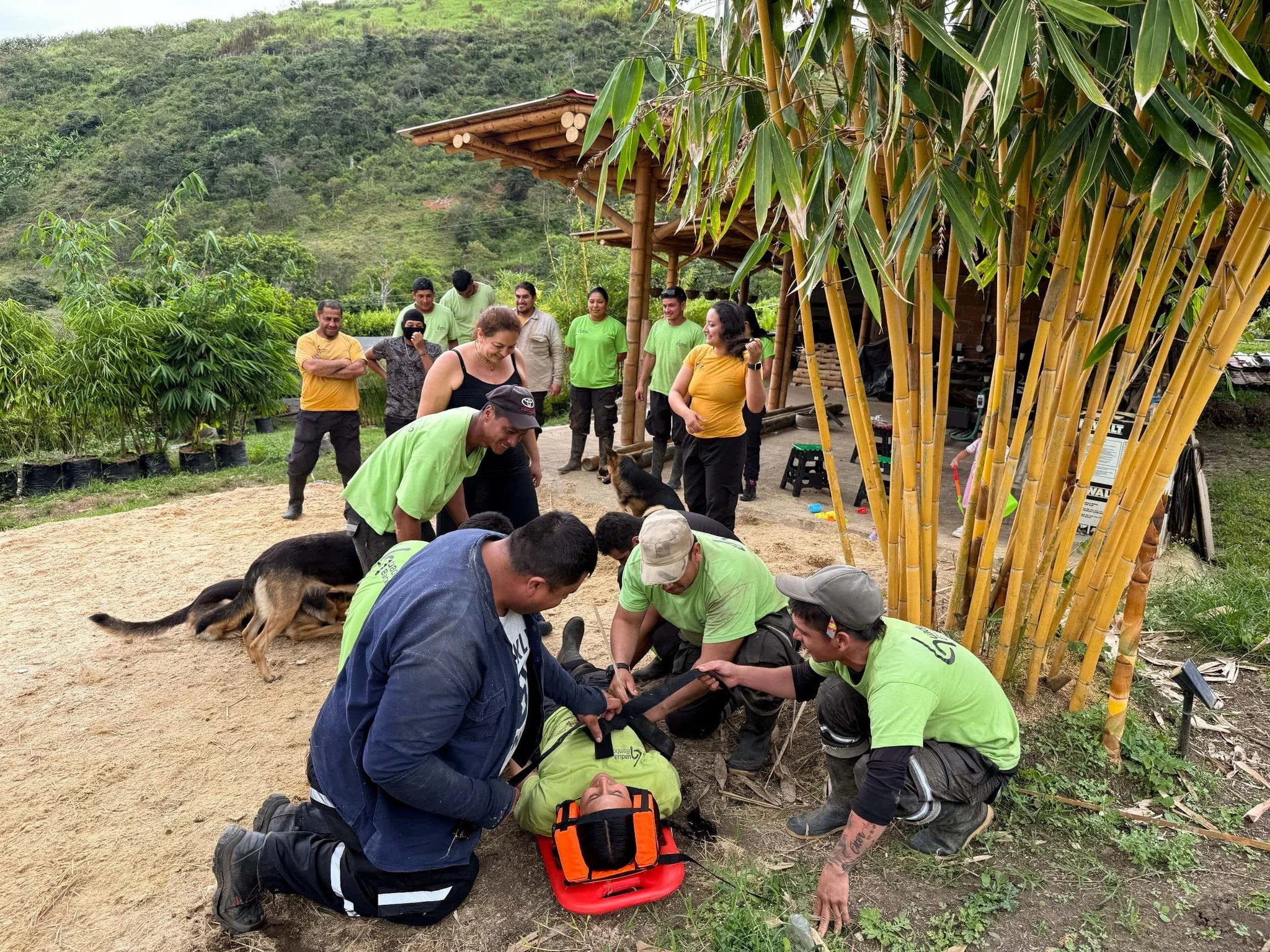
Fire & First Aid Training at Guadua Bamboo
Safety first! Our team at Guadua Bamboo® completes monthly fire and first aid training to stay prepared for emergencies and ensure a safe work environment.
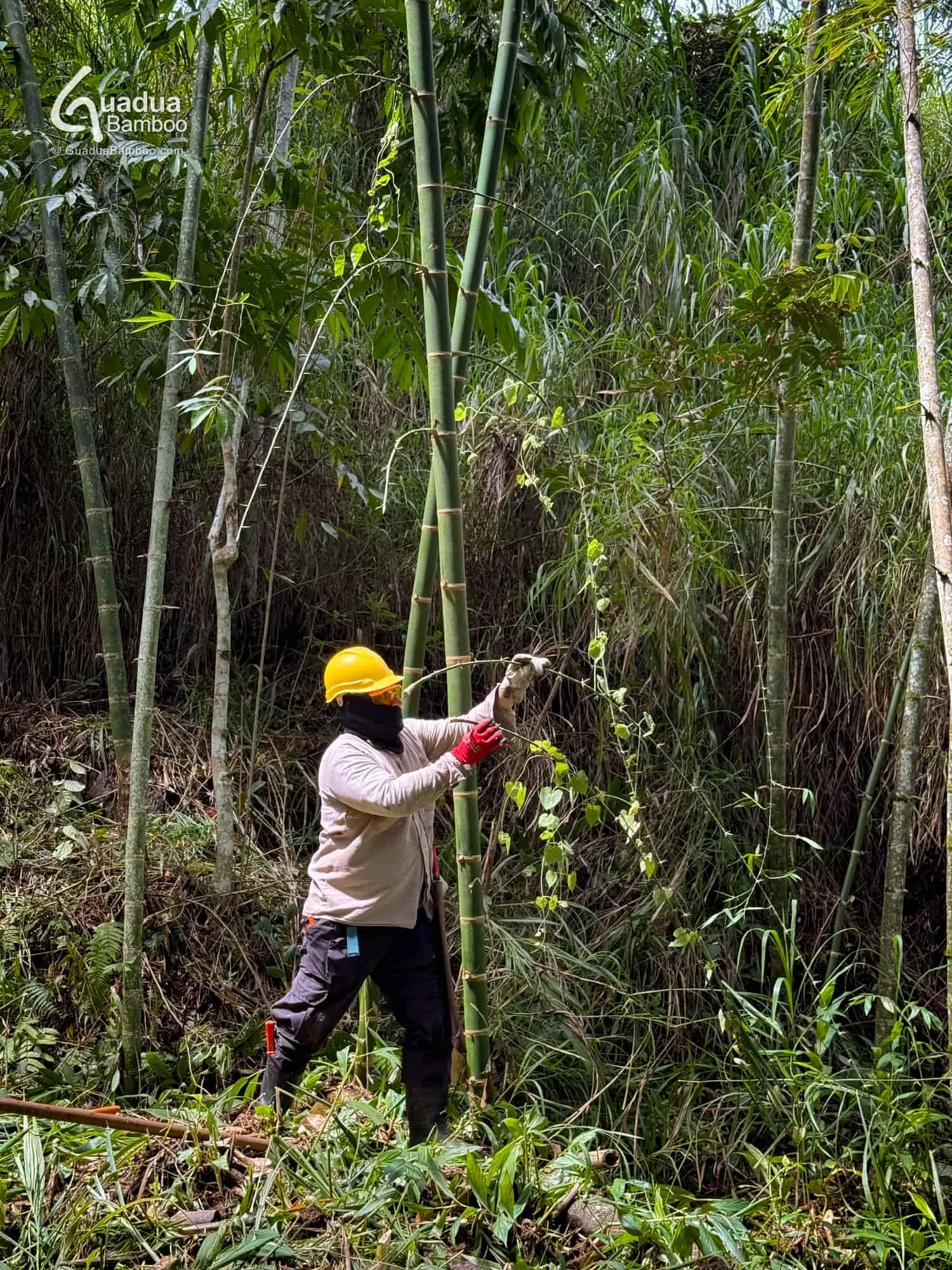
Handle With Care: The Thorny Truth About Guadua Bamboo Branches
🌿 Did You Know? The branches of Guadua angustifolia aren’t just long and strong… they’re also razor sharp! ⚠️
On average, the basal branches measure about 4 meters, but can stretch up to 8 meters long. Each branch node typically holds 3 spines, with the central spine being the longest.

Belgian Zoo Unveils Europe’s First Bamboo Tower - A Sustainable Milestone!
Discover Europe’s first 28-meter bamboo tower at Belgium’s Planckendael Zoo! This eco-friendly structure, crafted from sustainably sourced bamboo by Guadua Bamboo, sets a new standard for circular architecture and visitor experience.
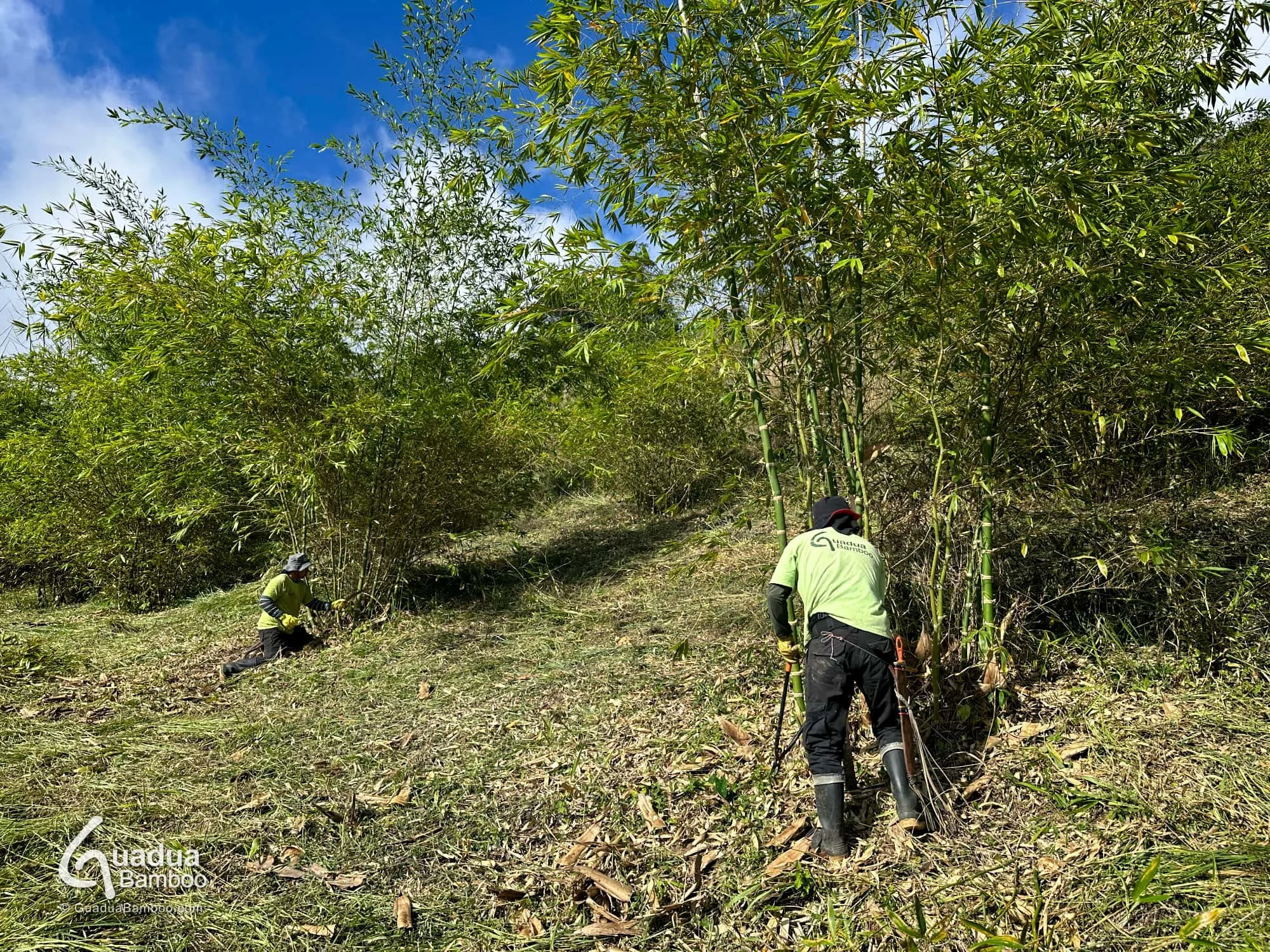
The Key to Thriving Guadua angustifolia Plantations: Maintenance Matters!
Did you know that Guadua angustifolia, often called the "Bamboo of the Americas," plays a crucial role in sustainability and environmental conservation? To unlock its full potential, regular plantation maintenance is essential.

A New Guadua Bamboo Landmark Project at Cerro Tusa Park in Colombia
Guadua Bamboo® collaborates with top experts to create a sustainable architectural landmark at Cerro Tusa Park in Venecia, Antioquia—blending tradition, innovation, and natural beauty.
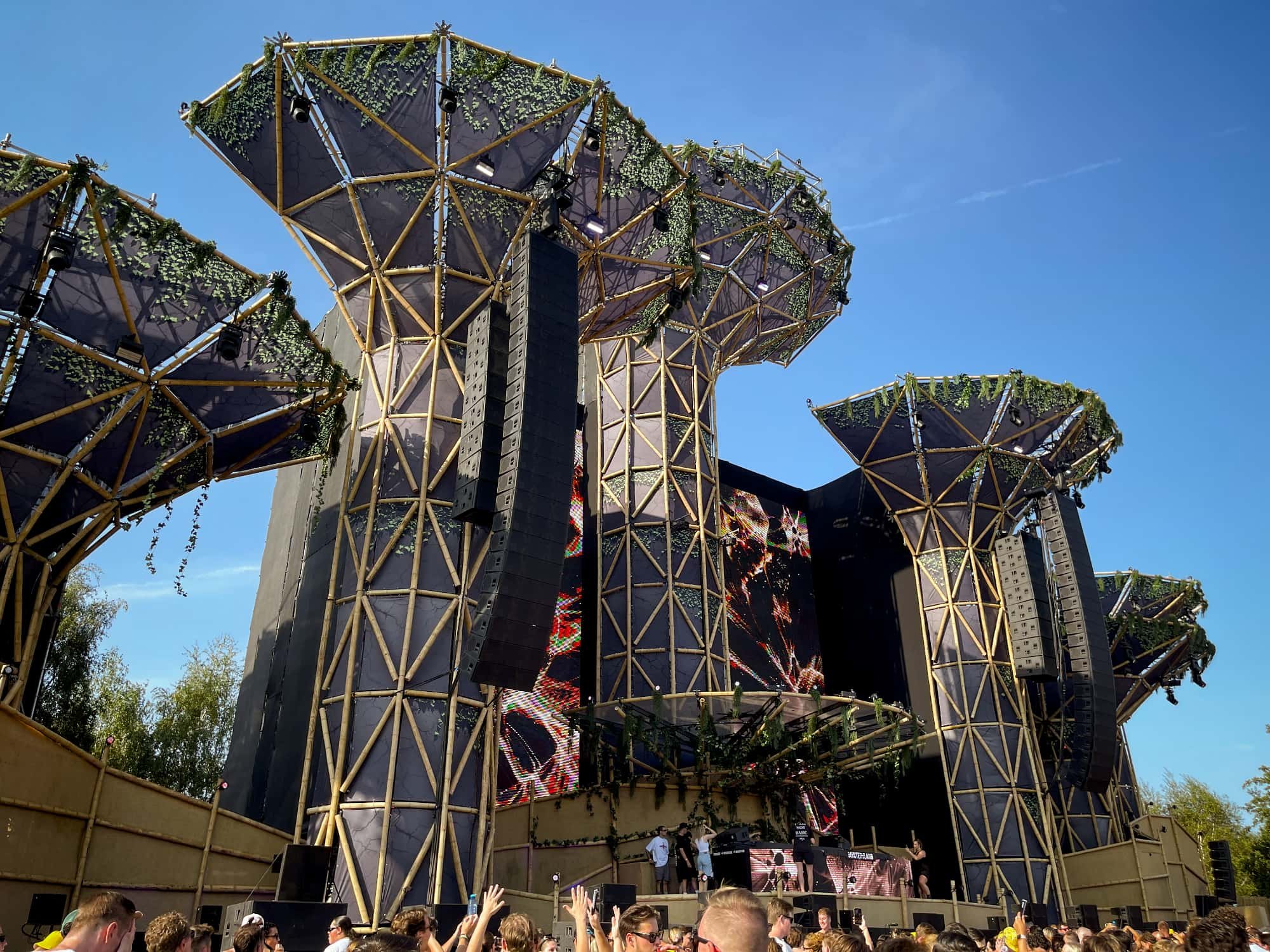
Festival Design Meets Sustainability: How Guadua Bamboo Transformed Iconic Stage at Mysteryland
Each year, Mysteryland sets itself apart not only with top-tier musical acts but also with breathtaking stage designs that emphasize creativity, sustainability, and a deep respect for the environment. This year, Mysteryland took an eco-conscious leap by incorporating bamboo as the primary material for one of its most iconic structures: the Pyramid Stage.

Building to Code - Guadua Bamboo in Public Projects
In Colombia, bamboo construction is governed by strict building codes that demand high standards in material selection, treatment, and quality control—especially for public works.
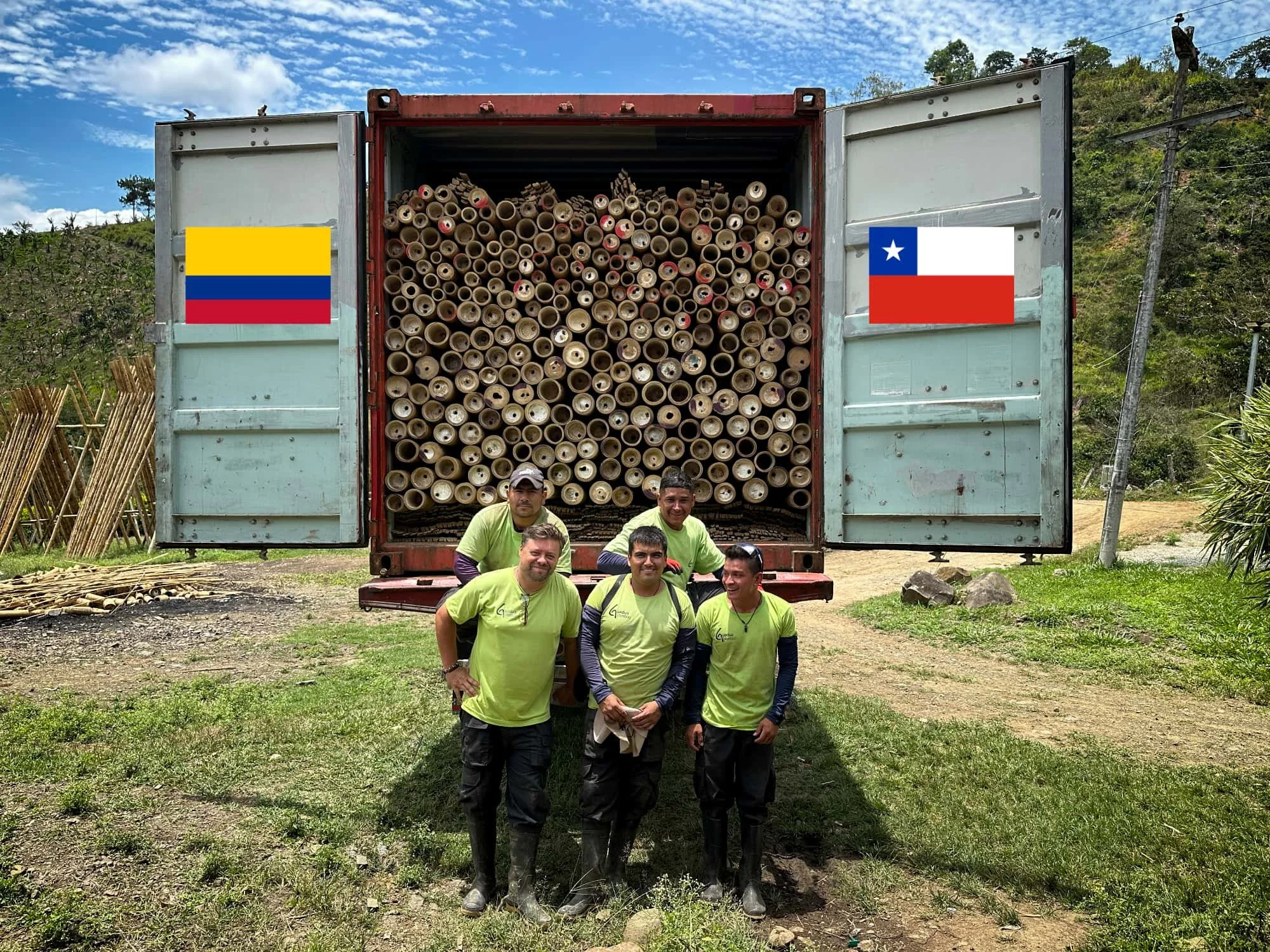
Premium Guadua Bamboo Exported to Chile for Design & Production Firm
This week our warehouse is buzzing with activity as we prepare another export, this time for our friends in Chile 🇨🇱. A full load of Grade A Guadua Bamboo® poles, slats, and mats is being shipped south to support a design and production company that values only the finest materials.
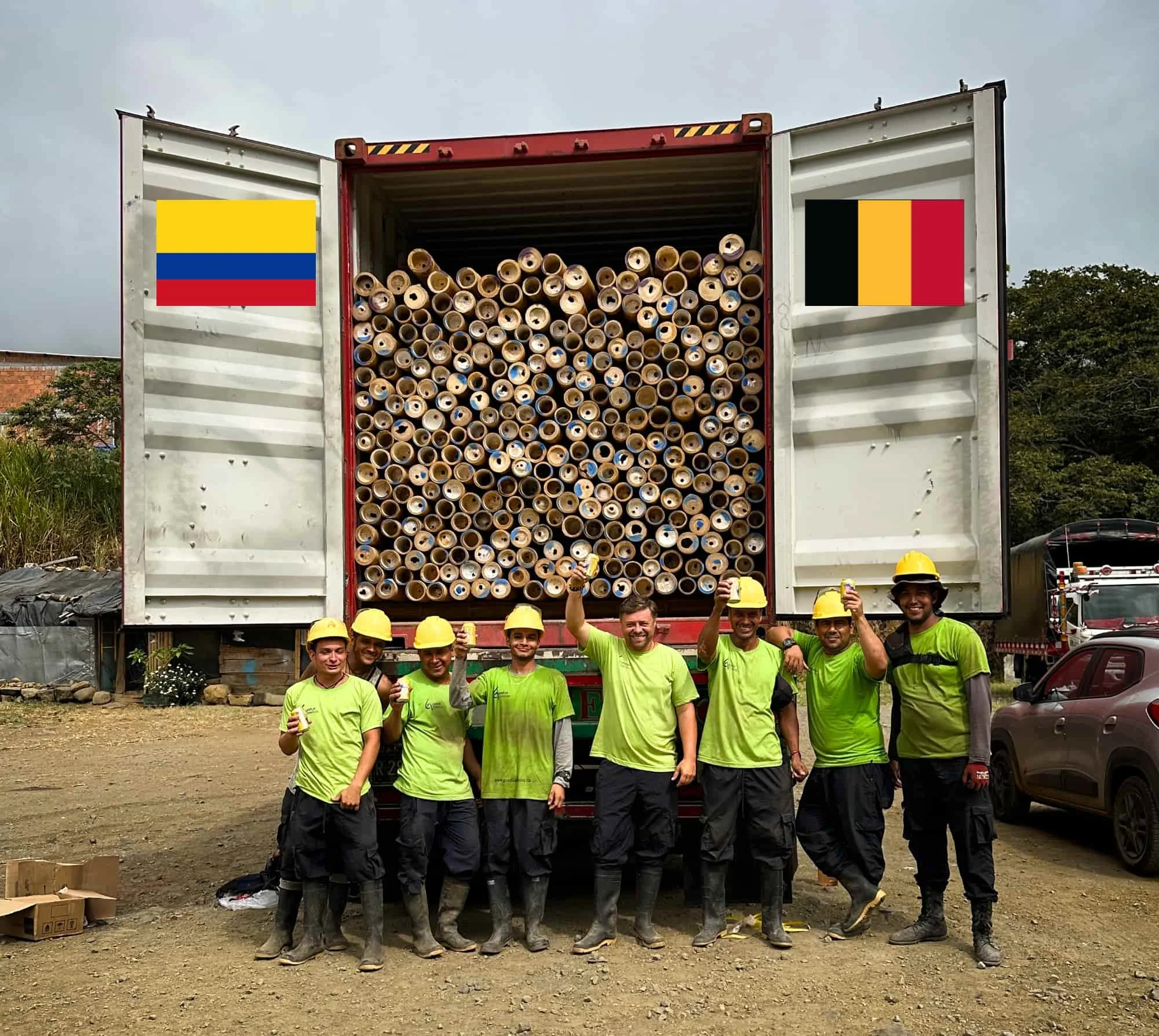
Guadua Bamboo Poles Shipped to Belgium for Europe’s Largest Bamboo Tower
A historic shipment leaves our factory this week: the third and final container of graded Guadua Bamboo® poles is on its way to Belgium 🇧🇪 for the construction of Europe’s largest bamboo tower at the renowned Planckendael ZOO.
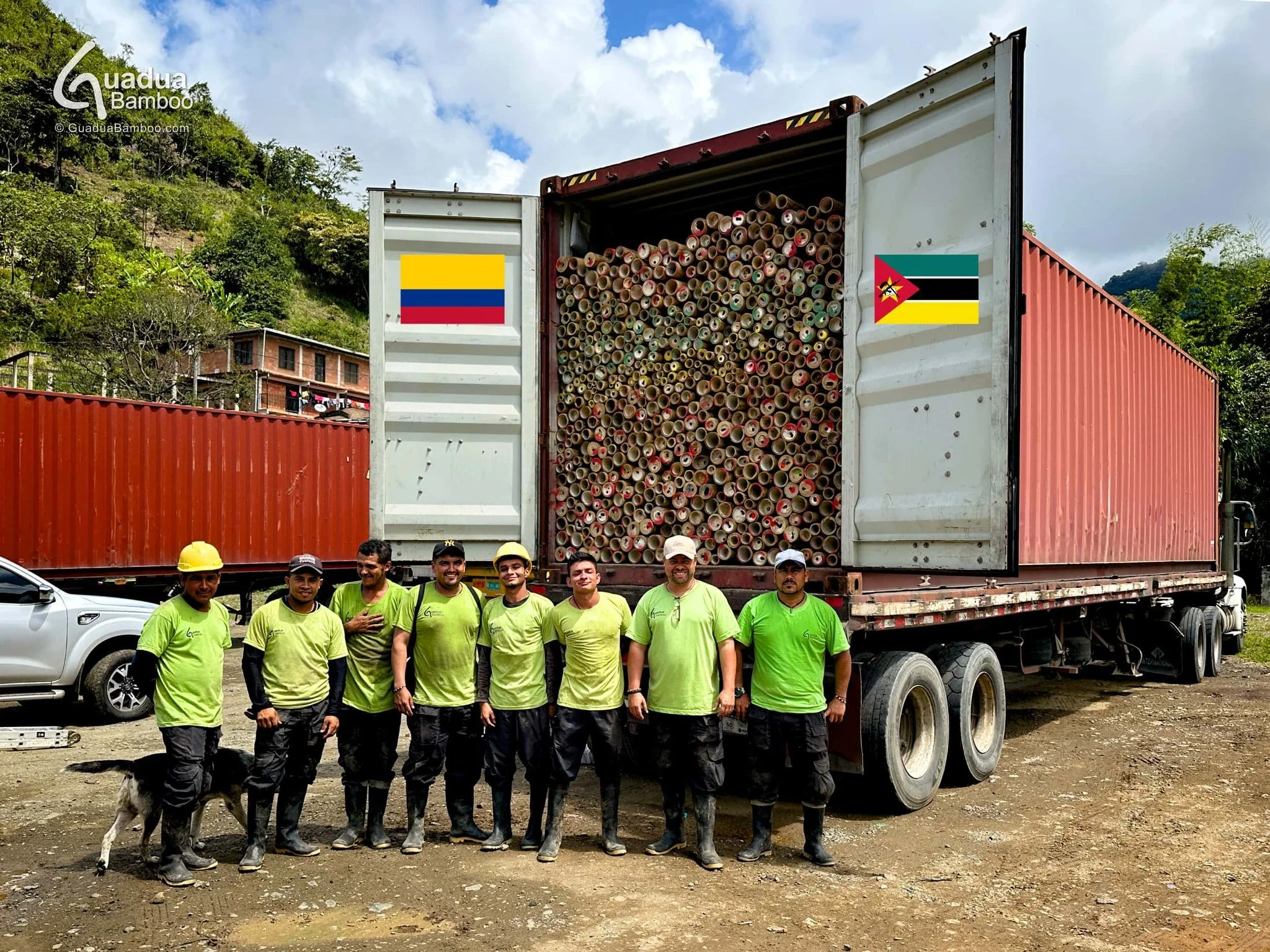
Exporting Guadua Bamboo to Mozambique for School Construction
Today we proudly announce a new milestone in our journey: a full container of Guadua bamboo poles is on its way from Colombia to Mozambique 🇲🇿. This shipment is especially meaningful because it will be used to build school infrastructure and furniture, providing students with safe and functional spaces to learn and grow.
